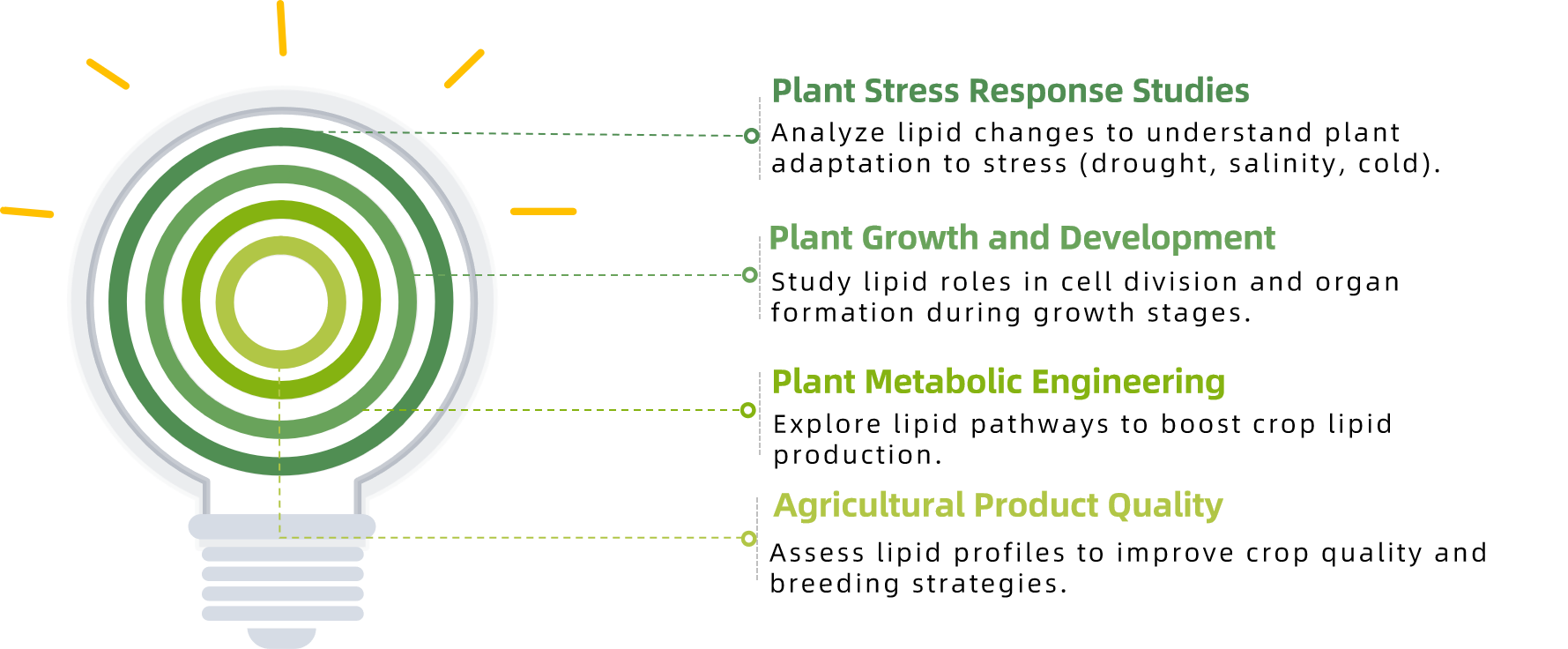Plant Non-Targeted Lipidomics Analysis Service
Lipids play an important role in plants, serving as structural components of cell membranes, main storage substances in seeds, pigments for energy capture in leaves, and signaling molecules for cell communication.
With the development of lipidomics, the mass spectrometric analysis of plant lipids has been significantly improved. Plant lipidomics is defined as the analysis of plant lipids using mass spectrometry. Many methods including ESI-MS, ESI-MS/MS, and GC-MS are used in the research of plant lipidomics. Non-targeted lipid analysis can be used to detect lipid metabolic changes in response to development and environmental changes.
Lipids play an important role in the growth, development, and response to environmental changes in plants. Glycerolipids are the most abundant type of lipids in plants, including phospholipids, glycolipids, and neutral lipids. Phospholipids can be further divided into subclasses, including phosphatidylcholine (PC), phosphatidylethanolamine (PE), phosphatidylserine (PS), phosphatidylglycerol (PG), and phosphatidylinositol (PI). Glycolipids include monogalactosyldiacylglycerol (MGDG), digalactosyldiacylglycerol (DGDG), and sulfoquinovosyldiacylglycerol (SQDG). The composition of these compounds varies between different tissues and species of plants and is strongly influenced by nutrients and environmental conditions.
Figure 1. Applications of Plant Non-Targeted Lipidomics
Instruments available for plant lipidomics identification include MS, GC, HPLC or LC-MS, GC-MS. The combination of chromatographic methods (such as GC or HPLC) with MS can greatly increase the coverage of lipids. As one of the widely used analytical techniques in plant lipidomics, GC-MS is used for the qualitative and quantitative analysis of a wide range of volatile and derivatized non-volatile lipids consisting of 14-24 carbon atoms, containing 0-3 double bonds. Compared to LC-MS and LC-NMR, GC-MS has the advantages of good analytical reproducibility and low cost. In recent years, LC-MS has also been used for large-scale non-targeted analysis of plant lipids.
MtoZ Biolabs offers reliable, fast, and cost-effective non-targeted plant lipidomics analysis services based on high stability, repeatability, and high sensitivity separation, characterization, identification, and quantification systems, combining LC-MS, GC-MS.
Service Advantages
1. Comprehensive Lipid Detection
Utilizing LC-MS and GC-MS, our service provides broad coverage of various lipid classes, ensuring in-depth analysis of plant lipid profiles across different species and tissues.
2. Advanced Technology
Equipped with state-of-the-art instruments, including GC-MS and LC-MS, we ensure high sensitivity, precision, and reproducibility for both qualitative and quantitative lipid analysis.
3. Cost-Effective Solutions
We offer a budget-friendly approach without compromising on quality, leveraging GC-MS technology known for its low cost and reliable results.
4. Rapid Turnaround
Our streamlined processes and advanced systems allow us to deliver fast, accurate lipid analysis to support your research in a timely manner.
Sample Submission Requirements

How to order?








